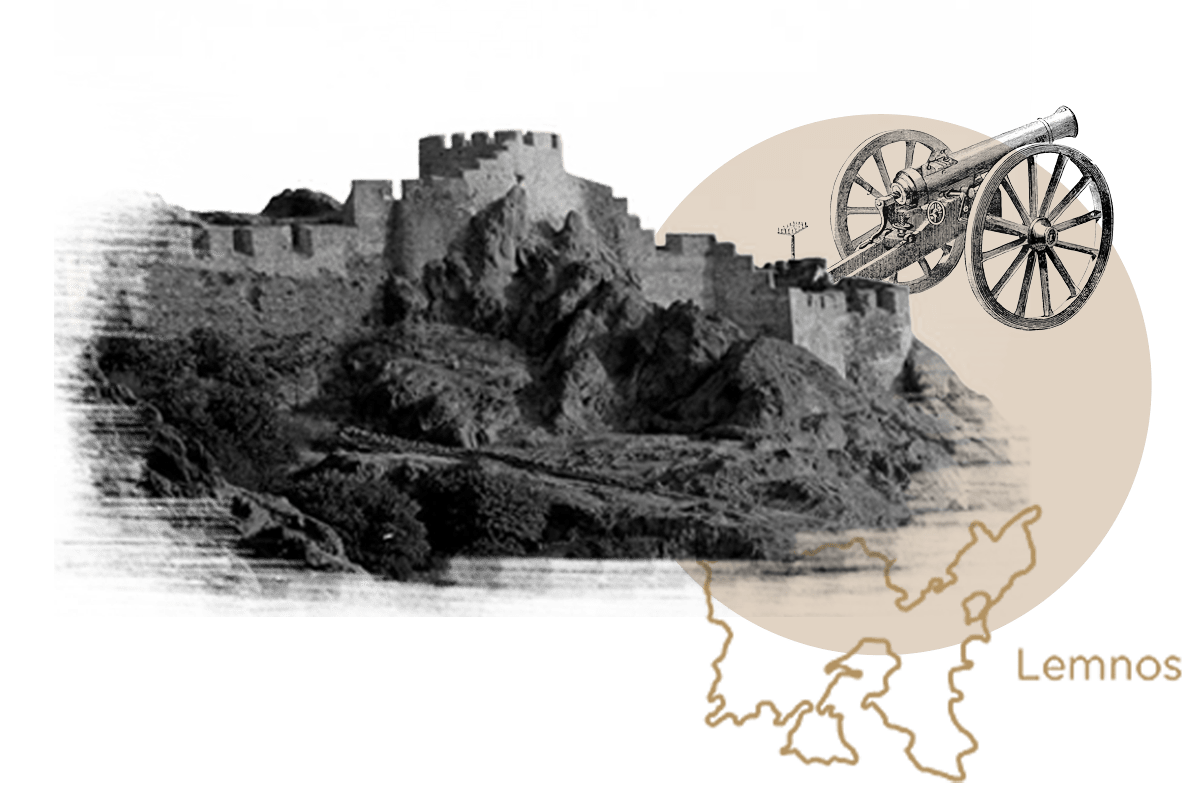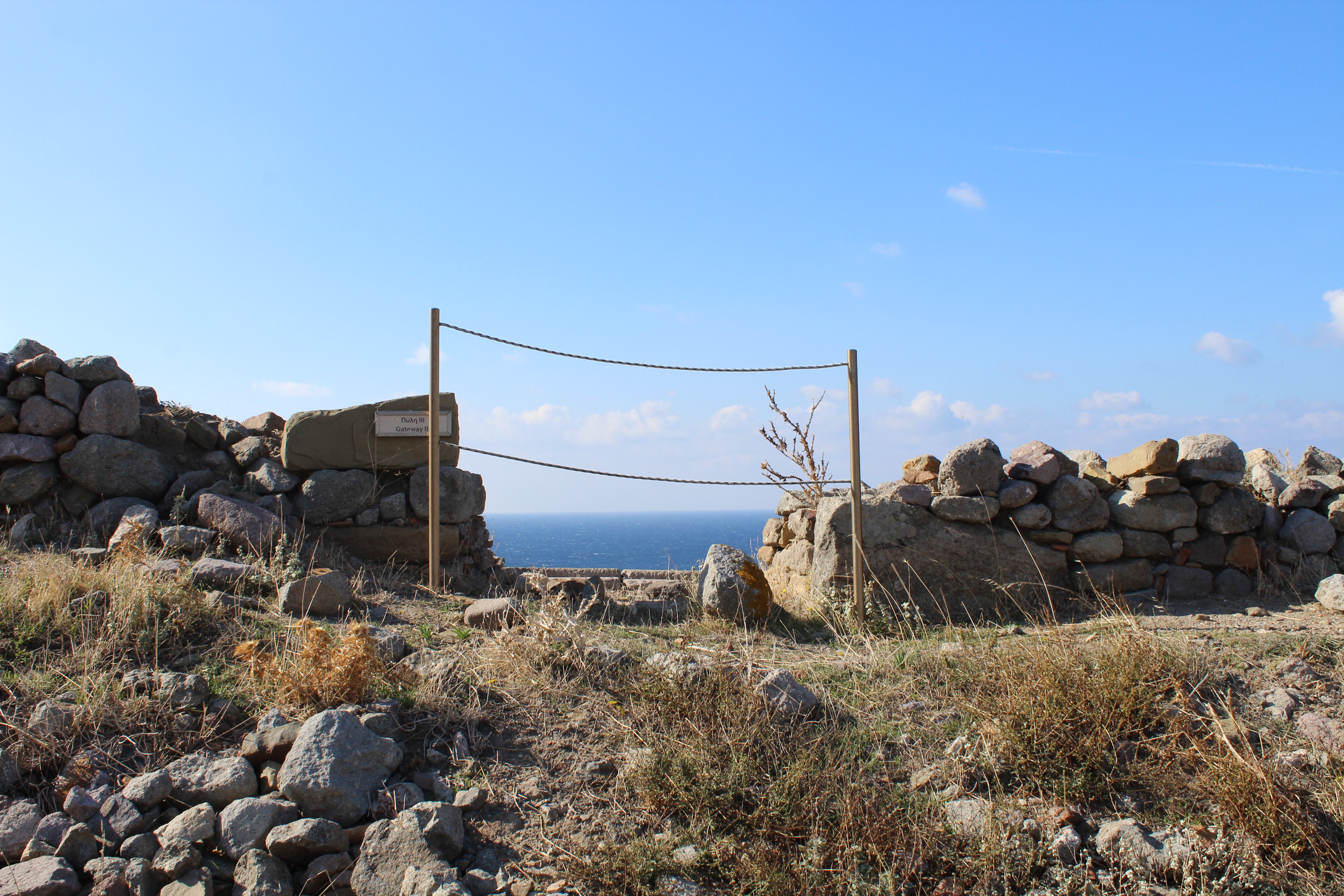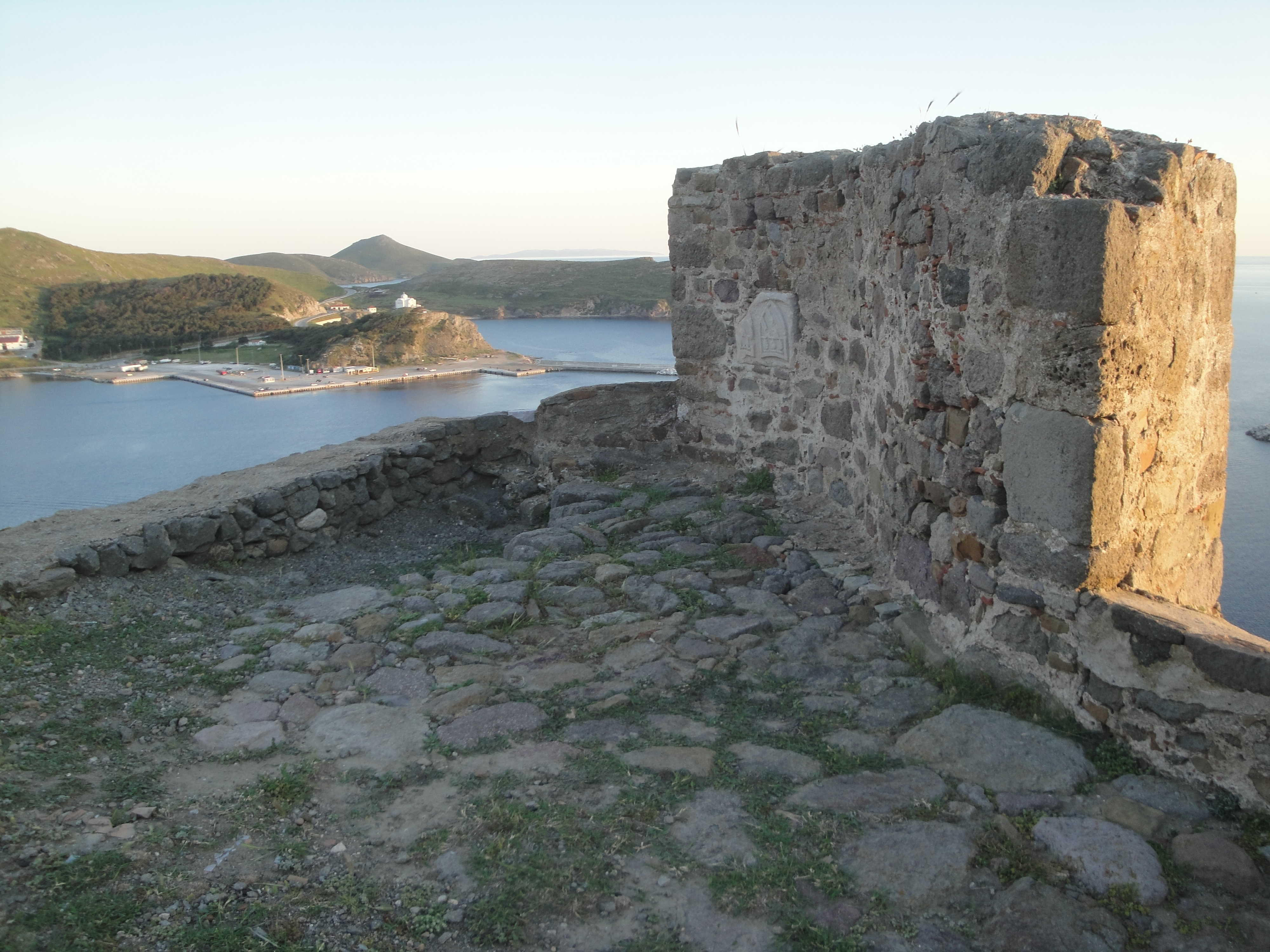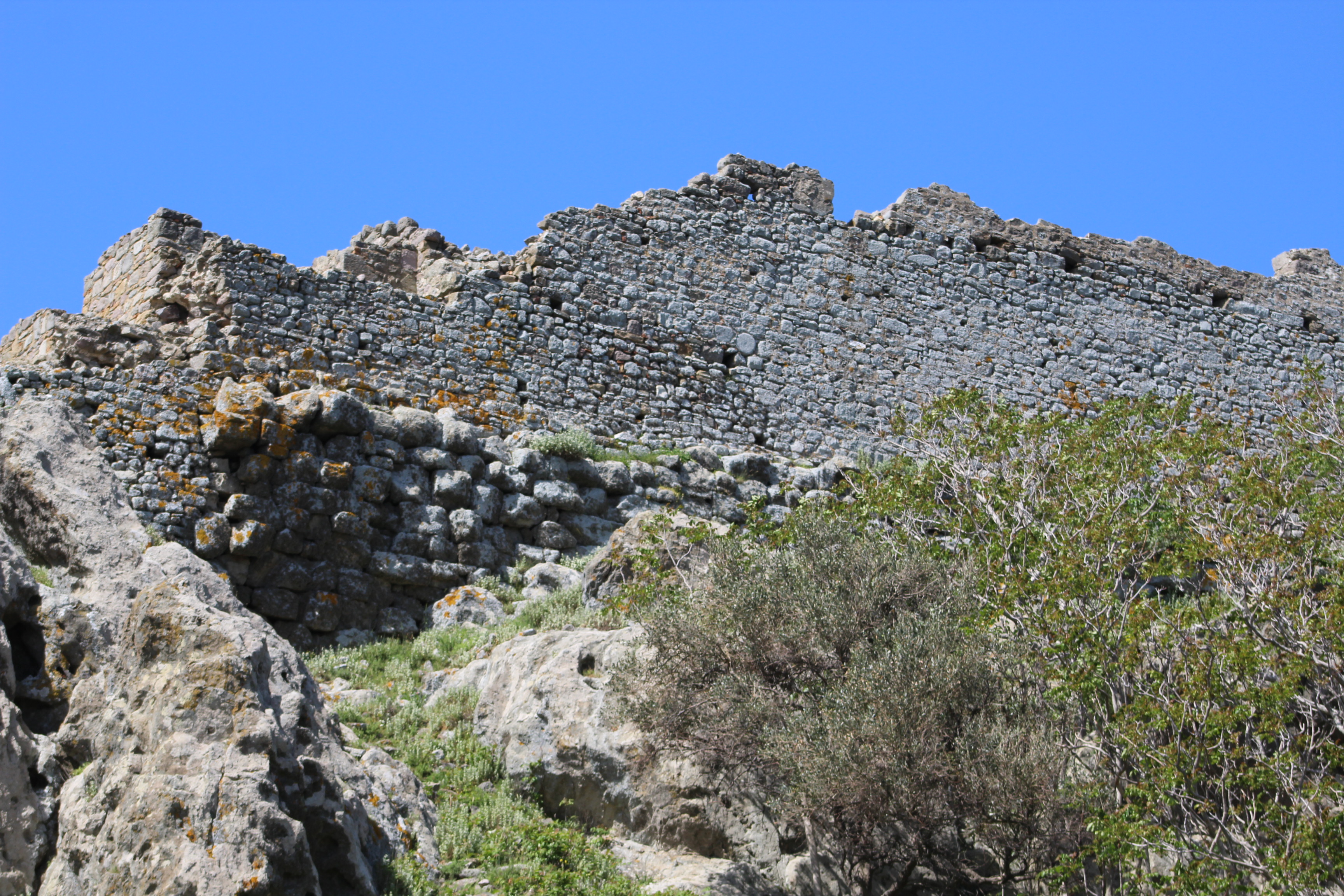Timeline
Timeline of Building Phases of the Fortification Walls
Given below are the dates associated with the construction, reconstruction, reinforcement and conservation of the fortification walls of the castle, from antiquity to the present day.


Post-1912 – Greek Sovereignty
The first interventions to consolidate the fortification walls are carried out on either side of the central gate.
Consolidation of towers on either side of the entrance, of tower 13 at the southeast edge of the kastro (flag tower) and the north part of the south fortification wall.
Meticulous clearing of vegetation inside the castle.
Works to conserve and support the monument. Many cracks in the walls of the south and east sides are repaired.
Consolidation works on the central gate and the towers flanking it, as well as on towers 1 (north of the gate), 6 (in the north part of the west wall), 10 and 11 (in the central part of the south wall).
Repairs, completions, jointings, restructurings, retrievals and injection groutings in the fortification walls of the area of the central gate (in the superstructure of the overpass and completions in its floor which was of plaster, in the intrados of the vault of the overpass, in the north fortification wall, in the section of fortification wall between the gate and tower 1 to the northeast), on the south enceinte in tower 12 and on the stretch between towers 12 and 13 (flag tower) and tower 6 which is in the north fortification wall of the 3rd gate.
Consolidation and conservation works in the area of the north gate and on the northwest section of the fortification wall.
Retrievals, consolidations, jointings and injection groutings in the space of the central gate including the towers that flank it, as well as repair, completion and rehabilitation of the stone-pavement outside it.
Repair and completion of the pavement outside the north gate, as well as repairs and enhancement works on the path leading to it.
Cleaning and enhancement of the west gate (gate 3) and arrangement of the stone staircase leading via the west end of the north external enceinte to the central terrace of the kastro.
Consolidation works on the stone retaining walls of the path leading to the central entrance, as far as the barracks buildings, as well as consolidation works on the buildings in the northwest and the mosque.
Enhancement of paths inside the kastro and construction of stone steps on the path leading from the central terrace to the citadel.
Repairs and jointings in the superstructure of the flag tower (tower 13), the stone wall of the path and the staircase leading to the flag-post, as well as on the stone retaining walls of the chemin de ronde.
Works on rehabilitating and retrieving the parts of the fortification wall that had collapsed in the vicinity and south of the north gate.
Third Period of Ottoman Rule
Works to reinforce and repair the kastro are carried out by Hadji Ibrahim Pasha (according to a study of the Hellenic Ministry of Culture, 2010).
The Ottoman Hasan Cezayirli repairs the fortification walls and mainly the stretches on either side of the central gate, which had suffered the most damage from the siege by the Russians in 1770.
Last Period of Venetian Rule
The Venetians capture the castle, strengthen the weak points of the fortifications and fortify other points from scratch.
Second Period of Ottoman Rule
Mohamed II reinforces the walls of the castle with additional constructions, such as towers. He builds buttresses on either side of the central gate and, by altering the form of the battlements, creates cannon ports on the seaward side of the fortifications.
Third Period of Venetian Rule
Repair of a fortress after the 1471 earthquake, by the Venetian Vice-Admiral Pietro Mocenigo.
Major repair and reinforcement interventions in the fortress by the last Venetian governor, Francisco Pasqualigo. (Francisco Pasqualigo).
Byzantine Empire
Emperor John V Palaiologos repairs and strengthens the fortress. The space of the central gate is reinforced with an additional gateway and towers.
Programme to refortify the fortress (according to a letter from Emperor John V to the priors of the Athonite monasteries, requesting their help in the construction and fortification interventions).
Construction of a counterfort in the space of the central gate, on the outer side of the east fortification wall and probably at other points of the wall considered to need reinforcing.
First Period of Venetian Rule
The first Venetian Duke of the castle, Filocalo Navigajoso, reconstructs the castle and fortifies the peninsula north of the acropolis, with high walls and towers.
Leonardo Navigajoso, Filocalo’s son, reinforces the fortress.
Paolo Navigajoso, Leonardo’s son, constructs numerous fortification works at important points on the island and it is therefore likely that he repairs and maintains the castle of Myrina, which is the most important of all the kastra.
Byzantine Empire
The Byzantine emperor Andronikos I founds a small but strong fort on top of the ancient acropolis.
Antiquity
The peninsula is fortified by the Minyans, who build the Cyclopean Walls.
The Pelasgians reinforce and improve the Cyclopean Walls.
The Athenians make additions and repairs to the pre-existing Pelasgian polygonal fortification walls and extend them eastwards.











